Travel Tips
Dispatch from Dubai, Part 4: A Peek into the Lavish Lifestyle
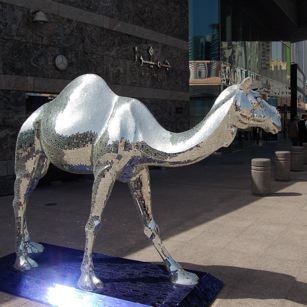 On her whirlwind tour of Dubai, Karen Elowitt takes a peek at some of the more over-the-top experiences to see what the fuss is all about.
On her whirlwind tour of Dubai, Karen Elowitt takes a peek at some of the more over-the-top experiences to see what the fuss is all about.
I spent the last couple of dispatches studiously refuting the image of Dubai as solely a Disneyland-type destination, but one cannot deny the fact that certain over-the-top attractions exist here in the Emirate.
So I decided to check out a couple of these joints firsthand to see what all the fuss was about.
The most obvious and unmissable landmark is the Burj Al Arab, the famous hotel that’s built in the shape of a sailboat.
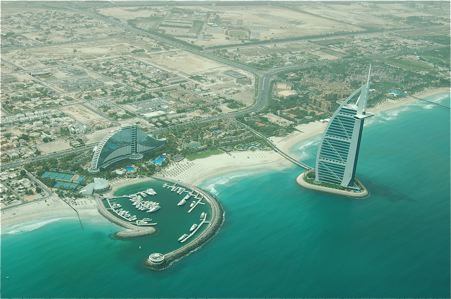 Known simply as “the Burj” the monolith sits on its own island several hundred feet off Jumeirah Beach and is visible from just about everywhere in Dubai. Whether you’re flying into the airport or just driving around town, its curved countenance dominates the skyline day and night.
Known simply as “the Burj” the monolith sits on its own island several hundred feet off Jumeirah Beach and is visible from just about everywhere in Dubai. Whether you’re flying into the airport or just driving around town, its curved countenance dominates the skyline day and night.
Sheikh Mohammed wanted the hotel built so that Dubai could have its very own instantly recognizable monument, like the Eiffel Tower in Paris or the Golden Gate Bridge in San Francisco. And indeed that strategy seems to have worked. All around the world the Burj Al Arab (which literally translates to “tower of the Arabs” in English) is known as the symbol of Dubai, a testament to its progress and status as a world-class international destination.
On my last trip to Dubai I was curious to see if the interior was as bold and memorable as the striking steel-and-glass exterior, but at that time gawkers had to pay a $40 entrance fee, unless they were guests in the hotel. Seeing as I was on a strict budget at the time, I passed.
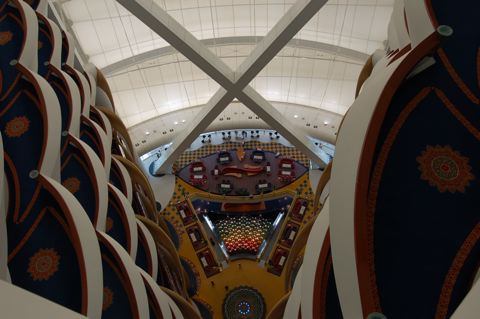 Now things are quite different. No one is allowed to come just to look. In order to get a peek inside you must either be staying in the Burj, or have a reservation to eat at one of the restaurants. They must have gotten tired of the endless stream of tourists parading through the corridors and decided to clamp down in order to maintain the exclusivity of the atmosphere.
Now things are quite different. No one is allowed to come just to look. In order to get a peek inside you must either be staying in the Burj, or have a reservation to eat at one of the restaurants. They must have gotten tired of the endless stream of tourists parading through the corridors and decided to clamp down in order to maintain the exclusivity of the atmosphere.
However, I was able to get in using my press credentials and officially “inspect” the site, and what an eyeful it was.
“Understated” is not a word that could ever be associated with the Burj, though it was outlandish in a way that I didn’t expect.
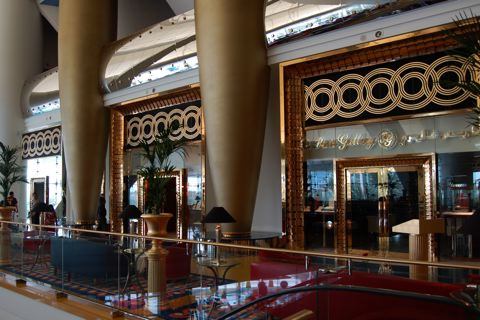 In stark contrast to the gray, angular, space-age exterior, the interior is all rich, gaudy colors and undulating curves. I guess I was expecting there might be more synchronicity between the two design-wise, but it was simply not so.
In stark contrast to the gray, angular, space-age exterior, the interior is all rich, gaudy colors and undulating curves. I guess I was expecting there might be more synchronicity between the two design-wise, but it was simply not so.
The split-level lobby is dominated by a crazy burgundy-and-pink carpet that looks like a pomegranate exploded on it, while the supposedly “gilded” columns looked like they were actually painted with a gold-tone paint, which was sort of a disappointment. I always assumed that since they poured so much money into the construction of the Burj that they could have sprung for some gold leaf at least.
However, that’s not to say that there’s no gold. In fact, there’s plenty of it. On the door trims, the elevators, the walls, the ceilings, the tables— pretty much any and every item is trimmed in gold in some way.
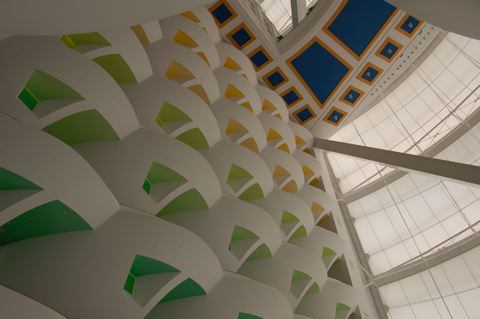 With one major exception. The massive inner atrium, which rises almost the entire height of the building, is dotted with a series of bulging white balconies that resemble marshmallows.
With one major exception. The massive inner atrium, which rises almost the entire height of the building, is dotted with a series of bulging white balconies that resemble marshmallows.
The walls of each accompanying floor are painted successively lighter shades of pastel, which makes the whole effect look something like the paint swatch display at Home Depot. Very strange indeed.
The multi-room split-level guest suites are also a riot of color and dazzle. Each has wood-paneled walls, a gold-trimmed bar, an ornate master bedroom with a gold-framed mirror on the ceiling, and a red-and-blue mosaic tile tub and shower.
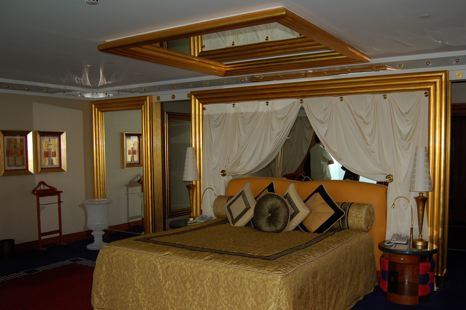 I could go on, but I’m getting a headache just thinking about it. Especially the carpets.
I could go on, but I’m getting a headache just thinking about it. Especially the carpets.
The colors and designs just didn’t make sense to me, but maybe there is some traditional Arabic-meets-Las Vegas design concept the designer was aiming for that I simply don’t understand. Suffice it to say that the place is grand, but not quite to my taste.
The other well-known attraction I got to visit was Ski Dubai. I have to admit that before I went there I thought the idea of indoor skiing in the desert seemed a bit crazy and pointless, but after spending a few minutes inside the facility I did a complete 180.
Because, to sum it up, Dubai is very, very hot, and Ski Dubai is very, very cold.
Don’t miss the start of Karen’s journey with Dispatch from Dubai, Part One: Getting There.
In the winter and shoulder seasons Dubai is simply very warm, but from May to September it’s pretty much blistering. The day I visited Ski Dubai it was about 105 Fahrenheit (41 degrees Celsius) outdoors, with about 80 percent humidity. Not the most ideal conditions for being out and about.
Most people tend to hang out in malls, restaurants and other air-conditioned oases during the hot months, in order to preserve their sanity and their hairstyles. So it should come as no surprise that Ski Dubai is located inside a mall.
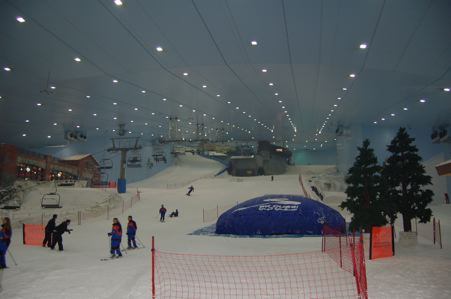 The place is set up like a real ski resort, with an equipment “rental” area on the lower level, where they supply you not only with skis, boots and poles, but also ski pants and coats. There is a locker room to stash your stuff, then up you go to the slopes.
The place is set up like a real ski resort, with an equipment “rental” area on the lower level, where they supply you not only with skis, boots and poles, but also ski pants and coats. There is a locker room to stash your stuff, then up you go to the slopes.
The escalator drops you at the second level, where you head through a revolving glass door into the glorious, frigid cold. Well, it’s not as cold as, say, Park City during a snowstorm, but it’s cold enough to keep the snow from melting and to credibly replicate a ski resort.
The lift (yes, a real chair lift) takes you to either of two drop off points, one midway up the “mountain,” and the second several hundred more feet to the left at the top. From my vantage point on the lift I noticed only one or two other skiers, which was a novelty to me considering that I am used to being mowed down by kamikaze snowboarders in the crowds at Squaw Valley.
It only takes about a minute and a half to ski down, and there are no moguls, but whizzing down the hill was one of the most exhilarating 90 seconds of my stay in Dubai. I didn’t venture the jump or the half-pipe though. Maybe next time.
Learn more about the latest developments in Dubai with Dispatch from Dubai, Part Two: Visions of the Future.
I loved it so much so that I decided to repeat the experience about six more times, which meant my total ski time added up to a whopping 15 minutes.
For this reason most people don’t want to spend the whole day there, so in addition to a whole day ticket you can also buy a two-hour pass for about $50. There’s also a kiddie snow park, where the rug rats can spend a few hours making snowmen and throwing snowballs at each other for about $20. And if you’re so inclined you can even take a 60- or 90-minute ski lesson.
All told, the signature skyscrapers and awesome attractions of Dubai do garner a lot of attention and are indeed impressive, even if they are not an entirely representative sample of the Emirate. So if you do decide to visit, check them out, but don’t forget to see what else Dubai has to offer— tempting though it may be to be a desert ski bunny on those sweltering hot days.
By Karen Elowitt for PeterGreenberg.com.
Read the final entry in the series: Dispatch from Dubai, Part Five: Beyond the Borders in Oman.
For more information, check out:












